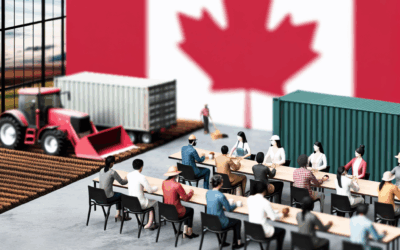U.S.-Canada Trade War Escalates as New Tariffs Take Effect
IIn a significant escalation of trade tensions, U.S. President Donald Trump announced on April 1, 2025, the imposition of a 25% tariff on most Canadian imports, effective immediately. This decision, part of a broader strategy termed “Liberation Day” tariffs, aims to address trade imbalances and bolster American manufacturing. The tariffs are expected to affect a wide range of Canadian goods entering the United States, including steel, aluminum, lumber, and agricultural products.
In response, the Canadian government swiftly implemented countermeasures. As of March 13, 2025, Canada imposed reciprocal 25% tariffs on U.S. steel and aluminum products valued at $12.6 billion and $3 billion, respectively. Additionally, Canada targeted other U.S. goods worth $14.2 billion, including tools, electronics, and sports equipment, bringing the total value of countermeasures to $29.8 billion. The goal of these tariffs is to protect Canadian industries and workers from the economic fallout caused by the U.S. decision.
Prime Minister Mark Carney, who assumed office following Canada’s April elections, engaged in discussions with President Trump regarding the tariffs. While both leaders expressed a willingness to collaborate, Canada maintained its stance by announcing plans for retaliatory tariffs to safeguard its economy.
The economic repercussions of these tariffs are profound. Analysts warn that the escalating trade war could lead to a $1.4 trillion hit to the global economy, drawing parallels to the economic downturn of the 1930s. Industries on both sides of the border, particularly manufacturing and agriculture, are bracing for increased costs and disrupted supply chains.
The financial markets have already reacted to the uncertainty. The Canadian dollar experienced fluctuations, rebounding from a near three-week low against the U.S. dollar amid legislative efforts to block the tariffs and weak U.S. economic data.
For Canadian manufacturers, higher costs on raw materials such as steel and aluminum will likely lead to increased production costs, reduced competitiveness, and potential job losses. American farmers may also feel the strain, as Canada is a major importer of U.S. agricultural products. The increased costs could drive up food prices and reduce profits for farmers already facing challenges from previous trade disruptions.
The energy sector faces particular challenges. The new tariffs could lead to increased drilling costs and potential retaliatory measures affecting oil exports, adding complexity to an already volatile market. Canada, being a key energy supplier to the U.S., may look to other markets, such as China and Europe, for alternative trade partnerships.
As the situation develops, both nations are under pressure to negotiate a resolution to prevent further economic harm. Business leaders, economists, and political analysts are urging the two countries to find common ground before the trade war worsens.
The international community watches closely, hoping for a de-escalation of tensions and a return to more stable trade relations between these longstanding partners. Whether diplomacy or further economic retaliation will define the next chapter of U.S.-Canada trade relations remains to be seen.



